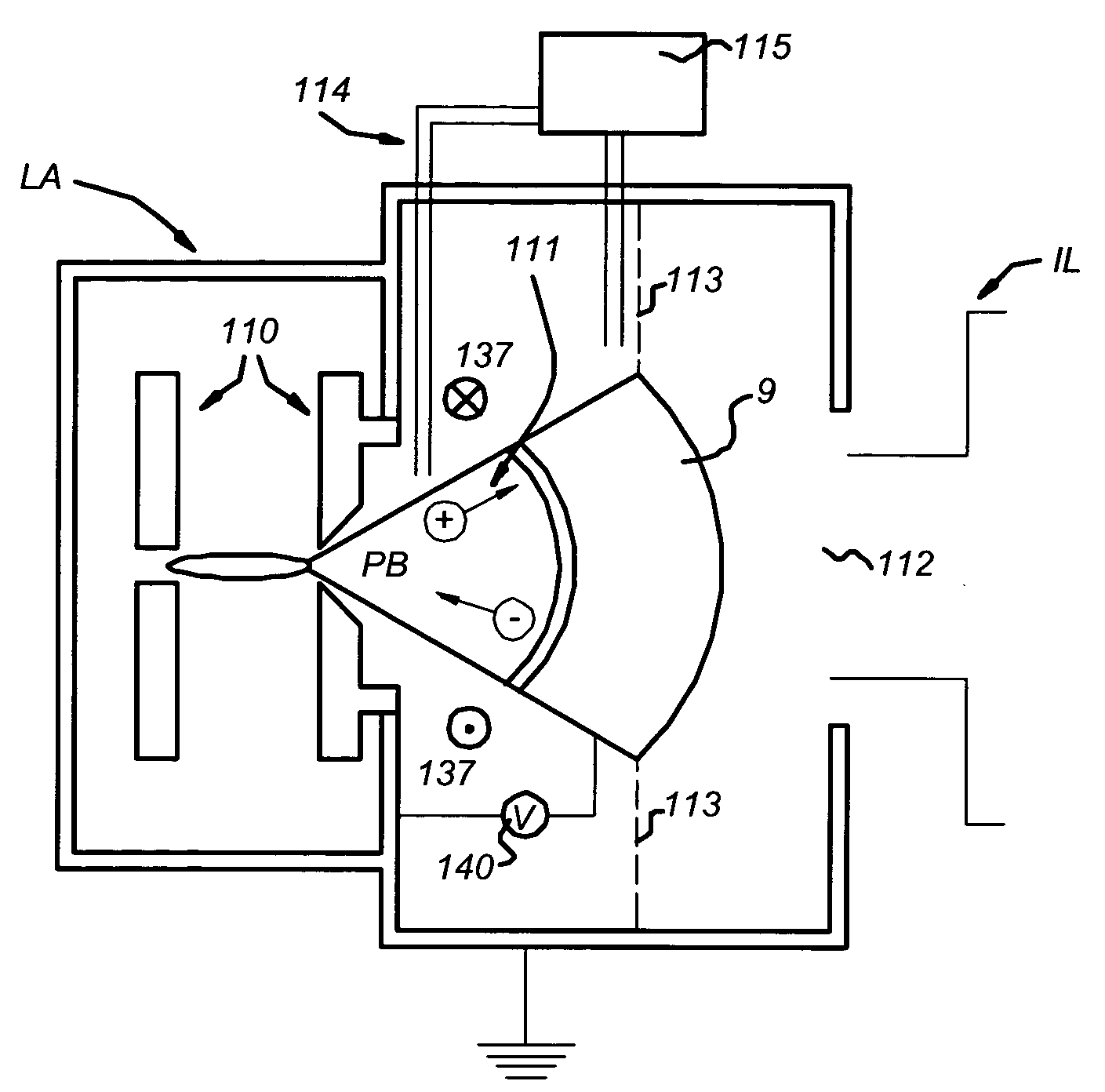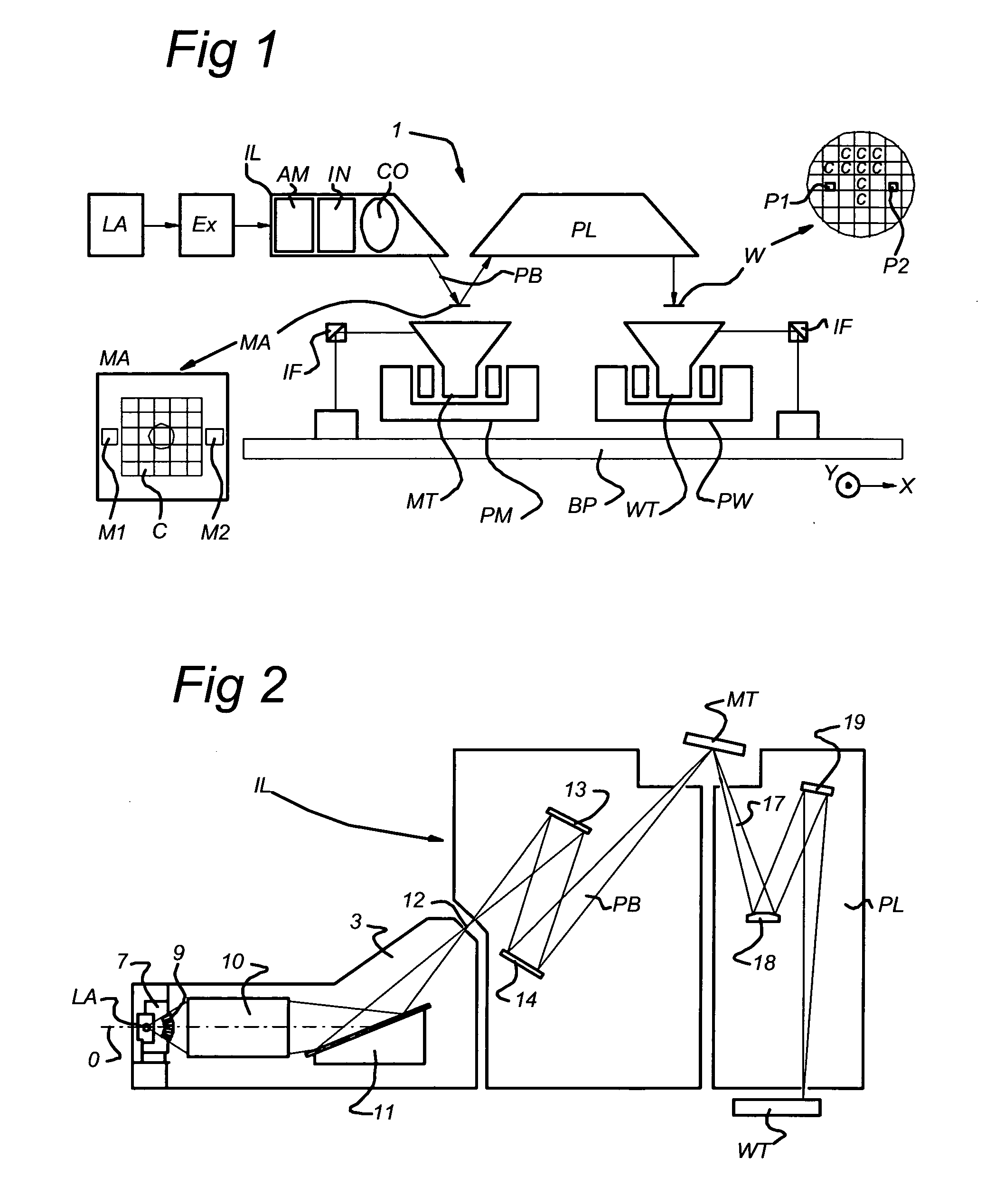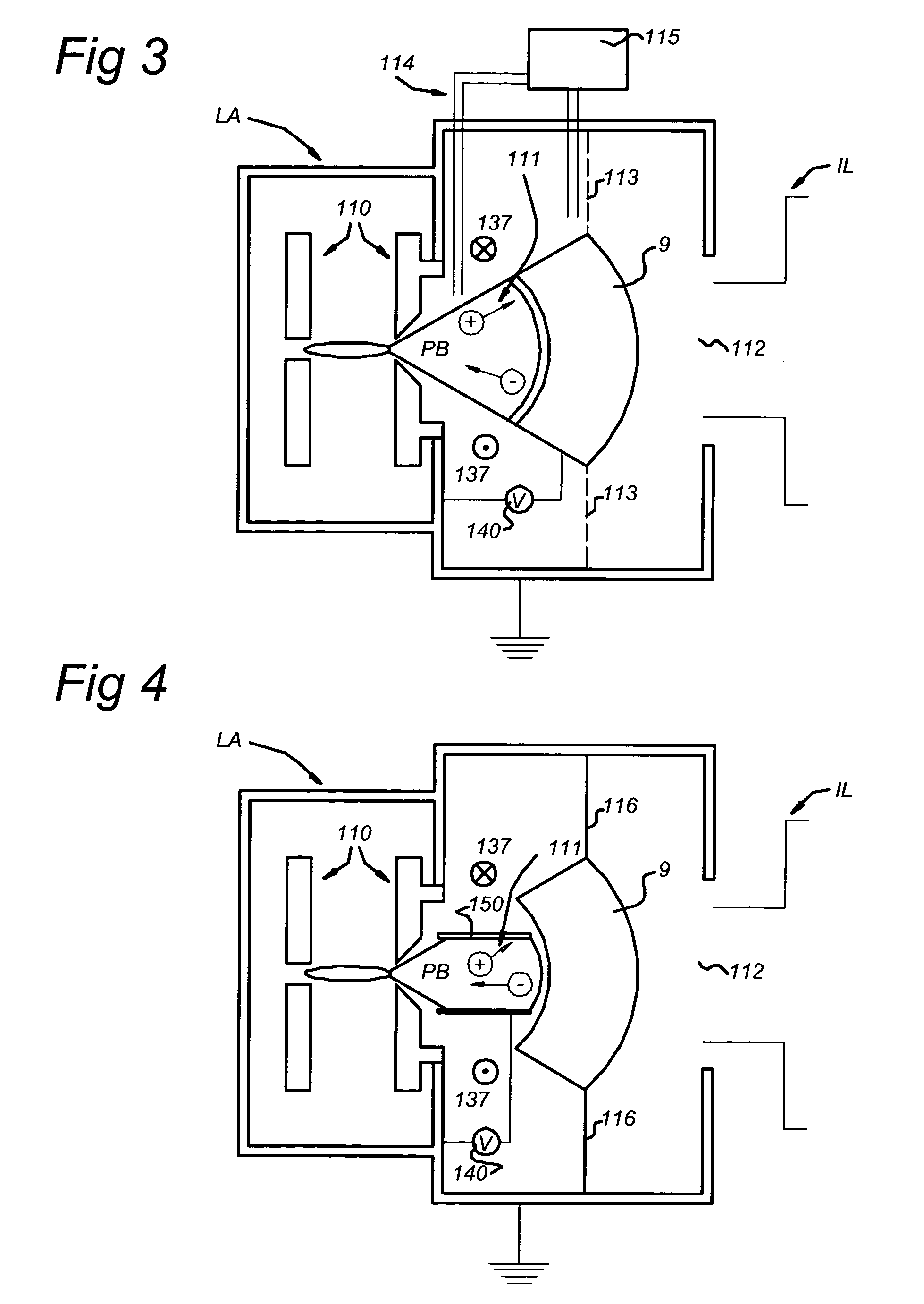Lithographic apparatus with debris suppression, and device manufacturing method
a technology of lithographic apparatus and debris, which is applied in the field of lithography, can solve the problems of damage to delicate reflectors and/or other elements, loss of beam intensity, and accumulation of absorbing layers on the surface of optical elements, and achieve the effect of removing undesirable contaminants
- Summary
- Abstract
- Description
- Claims
- Application Information
AI Technical Summary
Benefits of technology
Problems solved by technology
Method used
Image
Examples
embodiment 1
[0042]FIG. 1 schematically depicts a lithographic projection apparatus 1 according to a particular embodiment of the invention. The apparatus comprises a radiation system comprising a beam expander Ex, and an illumination system IL, for supplying a projection beam PB of radiation (e.g. EUV radiation). In this particular case, the radiation system also comprises a radiation source LA. A first object table (mask table) MT is provided with a mask holder for holding a mask MA (e.g. a reticle), and connected to a first positioning device PM for accurately positioning the mask with respect to item PL. A second object table (substrate table) WT is provided with a substrate holder for holding a substrate W (e.g. a resist coated silicon wafer), and connected to a second positioning device PW for accurately positioning the substrate with respect to item PL. The apparatus also includes a projection system (“lens”) PL (e.g. refractive, catadioptric or reflective system) for imaging an irradiate...
embodiment 2
[0065]As mentioned above, in general, any type of electrode connected to the voltage source 140 may be provided to produce the desired electric field E between such an electrode and radiation source LA. An example is shown in a second embodiment, wherein the additional discharge between radiation source LA and contaminant barrier 9 is provided by separate electrode 150. Then, the electrode may be a cylinder 150, preferably used as a cathode, as shown in FIG. 4. The hollow cathode 150 is connected to a voltage source 140. This geometry is also beneficial in combination with a contaminant barrier 9, since the electric field, generated between hollow electrode 150 and radiation source LA can direct ionized electrode material, coming from radiation source LA, away from the projection beam PB, i.e. direct it towards platelets of the contaminant barrier 9. Since an additional electrode (150) is introduced, unlike the embodiment described in FIG. 3, it is no longer necessary that the conta...
embodiment 3
[0067]FIG. 5 depicts another embodiment, similar to the previous one, but without the contaminant barrier 9. This embodiment is based on the insight that the ionization energy of electrode materials of the radiation source LA, like molybdenum and tungsten, is much lower than the ionization energy of noble gases as argon, helium and xenon. Therefore, when molybdenum and tungsten atoms are present in a gas discharge, the ions will be efficiently ionized. It might even be possible to ionize all the sputtered electrode material of radiation source LA within the extra discharge, caused by the electric field E between radiation source LA and electrode 150, and to collect it electromagnetically on the electrode that acts as a getter. Thus, if total ionization of debris is possible, contaminant barrier 9 may not be necessary anymore.
[0068]Also this embodiment is not limited to the schematic drawing of this embodiment in FIG. 5. For example, this embodiment may also optionally comprise a mag...
PUM
| Property | Measurement | Unit |
|---|---|---|
| wavelength | aaaaa | aaaaa |
| wavelength | aaaaa | aaaaa |
| wavelength | aaaaa | aaaaa |
Abstract
Description
Claims
Application Information
 Login to View More
Login to View More - R&D
- Intellectual Property
- Life Sciences
- Materials
- Tech Scout
- Unparalleled Data Quality
- Higher Quality Content
- 60% Fewer Hallucinations
Browse by: Latest US Patents, China's latest patents, Technical Efficacy Thesaurus, Application Domain, Technology Topic, Popular Technical Reports.
© 2025 PatSnap. All rights reserved.Legal|Privacy policy|Modern Slavery Act Transparency Statement|Sitemap|About US| Contact US: help@patsnap.com



